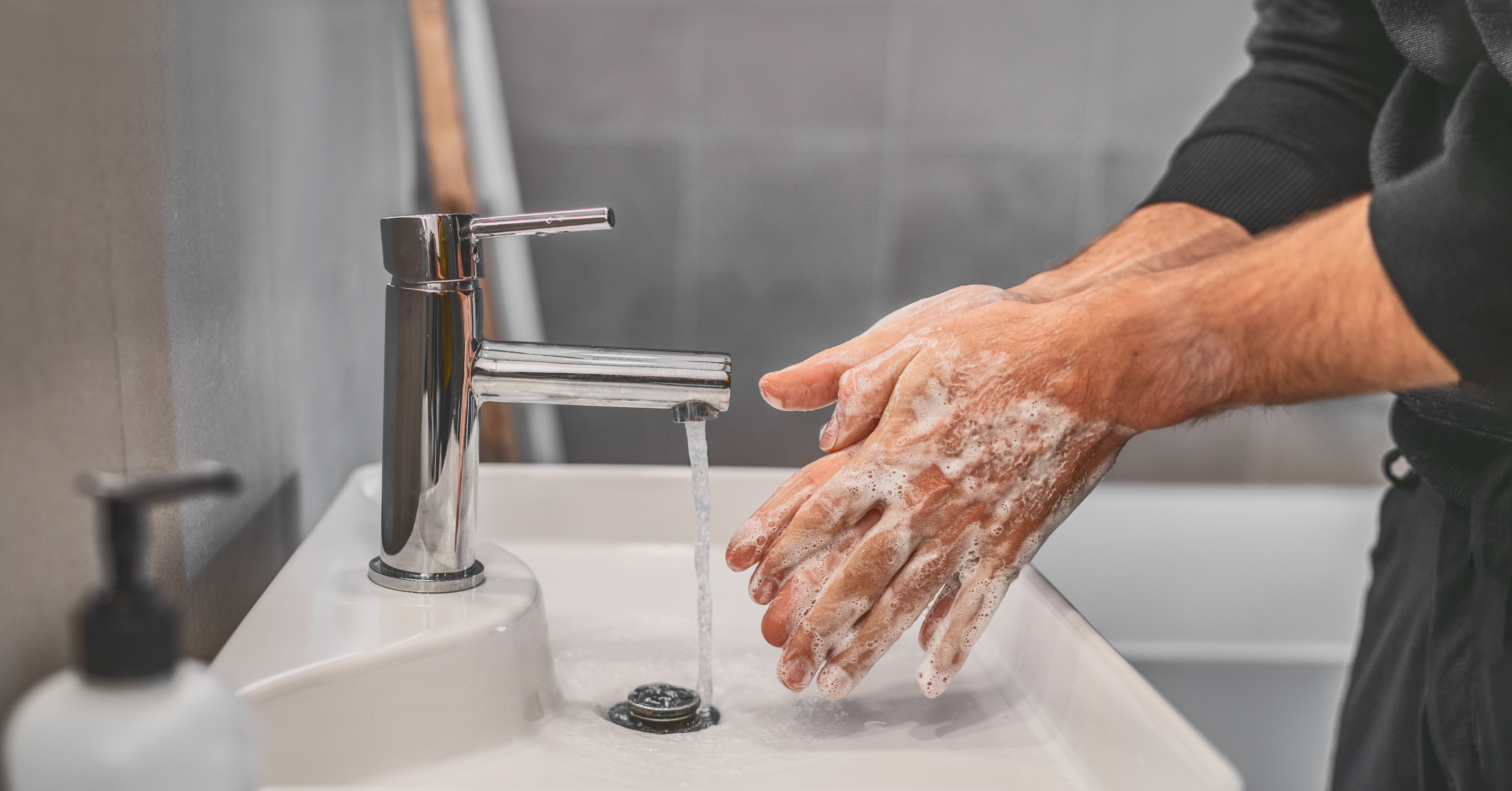- Explain COVID-19 and its impact on society and our industry.
- Describe how to limit and mitigate the spread of COVID-19.
- Outline options for fitness professionals to advance their skillset and education during this crisis, such as becoming an online personal trainer!
- Provide plenty of resources for personal trainers during this time.
What is COVID-19?
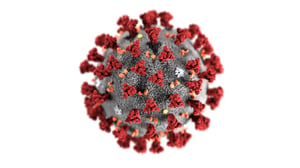 COVID-19 is a new strain of coronavirus not previously found in humans that stands for coronavirus disease discovered in 2019. Corona is Latin for “crown” and coronavirus is named as such because of the crown-like spikes on the virus’ surface.
COVID-19 is a new strain of coronavirus not previously found in humans that stands for coronavirus disease discovered in 2019. Corona is Latin for “crown” and coronavirus is named as such because of the crown-like spikes on the virus’ surface.
On March 11, 2020, in Geneva, the director of the World Health Organization (WHO), General Tedros Adhanom Ghebreyesus, officially labeled COVID-19 as a pandemic after it had killed more than 4,000 people in more than 114 countries (watch the media briefing HERE).
A pandemic (pan- all; demic- people) means that people world-wide can potentially be exposed. According to the CDC (2016), pandemics happen when new (novel) viruses emerge which are able to infect people easily and spread from person to person in an efficient and sustained way.
Because the virus is new to humans, very few people will have immunity against the pandemic virus, and a vaccine might not be widely available. The new virus will make a lot of people sick. How sick people get will depend on the characteristics of the virus, whether or not people have any immunity to that virus, and the health and age of the person being infected.
covid-19: Fact vs fiction
Social media and some other outlets have spread misinformation and falsehoods about COVID-19. Fortunately, there are several legitimate sources to get updated information.
Let's objectively break down COVID-19 and get to the truth of the matter!
ISN’T COVid-19 the SAME AS THE SEASONAL FLU?
One of the most common myths regarding COVID-19 is that is equally as fatal as the seasonal flu. According to Dr. Anthony Fauci, director of the National Institutes of Allergy and Infectious Disease, COVID-19 is currently estimated to kill at least 10 people per thousand infected (1%) and "it's about ten times more lethal than the seasonal flu" (Coronavirus Preparedness and Response, 2020).
I’M NOT SICK, SO I CAN STILL…
There is a 2-to-14-day incubation period; so, it is possible that the virus can be spread without knowing. There are likely those that are minimally affected by the virus, thinking they have a cold, or allergies, or that they are just under the weather. These individuals can unknowingly spread COVID-19 to other more vulnerable populations.
Symptoms of the virus
| Symptoms that may develop between 2 to 14 days from initial exposure: | Emergency warning signs for COVID-19 that require immediate medical attention: |
|
|
Who is in Danger?
Everyone is in danger of contracting the virus as it is highly communicable. Those at greater risk of mortality (death) from COVID-19 are those over the age of 70 and those with comorbidities, including cardiovascular disease, diabetes, chronic respiratory diseases, hypertension (high blood pressure), and cancer. The current numbers show that the male mortality rate is nearly twice the incidence of the female rate (Age, sex, existing conditions of COVID-19 cases and deaths, 2020).
Hospitals are decreasing the number of non-essential and elective surgeries in addition to asking others with chronic and life-threatening illnesses to push back follow-up appointments to later dates. As more people contract the disease, the percentage of hospital workers and hospital beds will be re-routed to help support the number of COVID-19 cases, potentially putting other individuals at risk. We must do our part to minimize any and all transmission of this disease.
Fitness professionals and fit clients are still susceptible to infection and death, though at a lower risk. However, their ability to transmit the disease to others, leading to multiple infections and a dangerous statistical risk, must, therefore, be mitigated.
How is it Transmitted?
COVID-19 is primarily thought to be spread from person-to-person through direct or close contact with someone that is infected. When we speak, droplets containing the virus can be emitted from the mouth. If within 6 feet, these (often unnoticeable) droplets can land in the mouth, eyes, or nose of others and directly transmit the virus.
Coughing and sneezing exponentially increases the number of droplets and the speed at which they are emitted. The CDC suggests coughing or sneezing into the bend of your elbow or a tissue rather than your hands to both cover your emission and to minimize spreading the virus by either touching others or contaminating surfaces or objects.
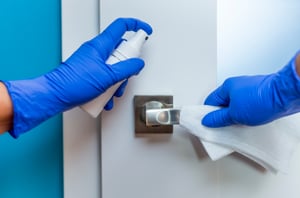
Gyms and fitness facilities initially came into close scrutiny in the media. Regular gym goers were deemed “super carriers” or “super spreaders,” which are those who spread the virus to a disproportionate number or others. Though this concept has no scientific basis ('Super-spreaders', 2020), the idea of an undiagnosed carrier coming to classes and gyms regularly and touching surfaces, handles, weights, and equipment is a real concern.
CDC Recommendations
The phrase “flatten the curve” became popular after the following graphic showed two curves. The red indicating the rapid spike in severe cases that exceed the threshold of the healthcare system. With mitigating factors, it is likely that the same number of people get sick but can be delayed and allow for everyone to receive the necessary medical treatment and support. Slowing the spread will help “flatten the curve.”
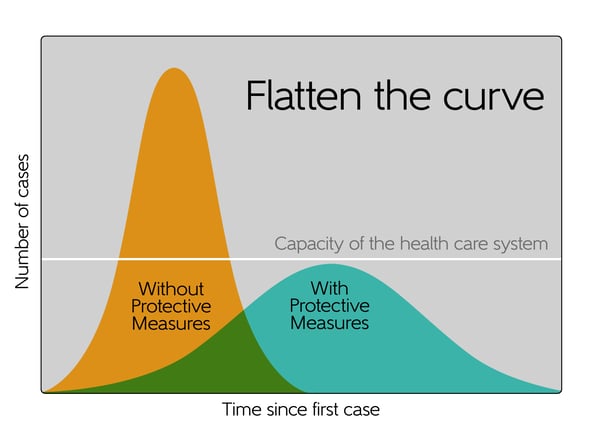
Zerbor/Shutterstock.com
The CDC has recommended several interventions that can help flatten the curve for the number of critical COVID-19 cases at one time.
CDC Recommended Interventions:
- Social distancing
- Keeping at least 6 to 10 feet away from others at all times
- Reducing the number of those in group gatherings
- Restricting visitors
- Cancelling non-essential travel and work or school events
- Canceling community and faith-based events
- Shelter-in-place
- Lockdown
- Quarantine
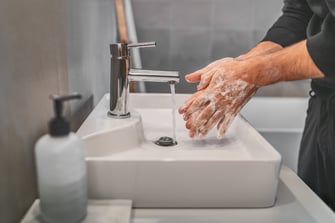 Wash hands
Wash hands
- Hands should be washed for at least 20 seconds with soap and warm water. This should be done multiple times per day, even when you have not been out.
- Sanitize hands
- If the ability to wash hands is unavailable, use sanitizers with at least 60% alcohol and up. This should be done multiple times per day, even when you have not been out.
- Avoid touching your face
- COVID-19 is likely to get into your body through your mouth, nose, and possibly eyes. Washing hands and sanitizing is vitally important to keep transmission of the disease from hand to face. Do not touch your face. Keeping your hands from touching your face can be difficult because this is done subconsciously throughout the day. Try not to touch your face and wash and sanitize regularly in case you do.
These mitigating factors can help blunt the curve by minimizing spikes in serious coronavirus cases that tax our medical systems beyond their capacities.
What Does this Mean for Gyms, Trainers, and Other Fitness and Wellness Pros?
One of the most effective ways to flatten the curve is via social distancing, which limits the number of people within a certain area. Gyms, along with restaurants, bars, and cafés, were among the first businesses specifically named as a risk due to limited ability to social distance and because of the number of objects and surfaces touched.
Once gym closings were implemented, trainers and instructors were left without work. Even gyms where the municipalities allow them to stay open are being affected because many people are working from home and the membership and training traffic has decreased significantly. Some facilities and companies are not waiting for government mandates to close their doors, recognizing a civil responsibility to protect members and staff from this highly contagious virus.
A stimulus package which establishes a $367 billion employee retention fund for small businesses passed through the Senate on March 25th. The House is expected to pass it by Friday, March 27th (Werner, E., DeBonis, M., & Kane, P., 2020). The Federal Emergency Management Agency (FEMA) has projected that without a federal economic relief plan, many small businesses may be at risk of immediate collapse.
The International Health, Racquet & Sportsclub Association (IHRSA) is working with lobbyists and politicians to ensure the fitness industry is added to the economic stimulus plans. These plans will allow businesses to stay open via low or no interest rate loans from the government.
Why is it Important to Adhere to Local, State, and Federal Guidelines?
Several gyms, particularly smaller gyms and niche fitness facilities that feel that their size or uniqueness makes the word gym negotiable under these circumstances, are choosing to stay open even after their local and state governments required closing.
Some of these businesses will argue that they can stay open because they can either continue their business without being noticed or because they are limiting their facilities to less than 50, 10, etc. people at a time. These lower numbers are, therefore, seen as being responsible while remaining open. This will still fall under governmental non-compliance.
What are the Concerns Related to Non-Compliance?
As communicable as this virus is, there is a social responsibility that gyms should take to limit exposure to their staff, membership, and client base. We must all do our part to blunt the curve and minimize the spread of this virus—not because the government requires it, but because we have a social responsibility.
Most fitness companies and individual professionals have “Do no harm” as a core value of their business. It may be, in this instance, that doing no harm cannot be ensured by staying open. So, to align with our own values, it may be integral to close our doors until it is safe to reopen them.
Beyond social responsibility, there is a legal and ethical responsibility. New York City has fined several businesses for remaining open that were required to shut down. Fines and citations may be provided for non-compliance.
Ultimately, the concern is there may be an asymptomatic infected individual that comes to your facility and spreads the virus and causes more sickness and potentially death. If required to close, be sure to follow the law. There may be severe legal liability if someone contracts COVID-19 at your facility during a time you were supposed to be closed. The short-term gains of keeping some business is not worth the long-term potential loss of business for non-compliance and potential legal ramifications for staying open if something goes wrong.
Social media followings can be essential for business, but not if the company is found to be breaking the rules. This can cause irreparable damage to your business and reputation.
We do not know if our client’s runny nose, scratchy throat, or cough/sneeze is due to allergies or COVID-19. Being able to identify if someone is well enough to exercise during this pandemic is beyond our scope of practice. Many in the fitness profession have downplayed the severity of this disease.
Again, this is beyond a trainer’s scope of practice and it should be left to the medical professionals and infectious disease experts about the severity of COVID-19. Downplaying the severity from a layman’s perspective is not helpful and disrespectful to those that are sick, dying, or have died from this highly contagious disease.
Though those above the age of 70 with comorbidities are more susceptible to dying from this disease, it is not within our scope of practice to decide who, what age, which comorbidities, and so on we can continue to train. If your area is asked to shut down, do not try to covertly remain open and put others at risk of contracting COVID-19.
What are the Options for Fitness Professionals?
Education
As many personal trainers are limited in their ability to work, make money, and support the individuals and the communities they are a part of, this is a good time to start expanding knowledge base, education, skillsets, and abilities.
Taking advantage of downtime with professional development and education allows you to better your skillset while the schedule permits. There are most likely courses that you have been meaning take, even signing up for them and not following through because of work obligations.
NASM is working rapidly in response to the needs this pandemic has exposed and created. Numerous subject matter experts have been tasked with developing content to support trainers and fitness professionals during this pandemic. Many are being offered for free at nasm.org.
This is a great time to emphasize and prioritize personal and professional education. Daniel Pink (2011) discusses the science of motivation in his book Drive: The Surprising Truth About What Motivates Us. In it, he discusses three primary factors that drive all successful and happy people in the workforce:
- Mastery: the desire to get better at something that matters
- Autonomy: the urge to direct our own lives
- Purpose: the yearning to do what we do in the service of something larger than ourselves
These are evidence-based tenants that can applied to what drives us to be fitness professionals and to be better at our profession. These can also be applied to our clients, class participants, and members, especially if they see us as a source for mastery and a source for fitness-based education.
We can use this downtime to continue to work toward mastery, develop greater autonomy, and spend time applying our values, our desired outcomes for what we do, and identifying our why—our purpose. As we refine our purpose, we can go back to work with a better sense of who we are, what we want to provide, and how we can help others.
NASM will be providing multiple sources of free content during the coming weeks. Subject matter experts are being called in to provide articles, webinars, podcasts, and more to help provide current and relevant content for fitness professionals now.
Continue to check our website as well as our social media channels and your e-mail regarding upcoming offerings.
Development Resources From NASM
NASM.ORG
NASM Blog
- Check out this article “Using the NASM OPT Model for Home Workouts”
- 5 Great at Home Morning Moves
- Return to the Gym Plan
PG-NASM Blog:
NASM CPT Podcast
- Sample episode: “The NASM-CPT Podcast: How to Virtually Train Clients in a COVID-19 World”
Online Training
Many fitness centers and gyms are providing online options for their members, such as on-demand classes or mobile apps with planned workouts. Additionally, some trainers and fitness instructors are offering free exercise programs and workouts on social media. Others are offering training via e-mail or online. Any method you choose to continue connecting with your clients is a great way to maintain your clientele.
You might consider asking your clients if they will be okay with you writing them an at-home program for them to do several days per week. The pricing is up to you. Writing out programming is less time-consuming and can be developed and easily distributed to multiple people at a more affordable rate. This can be done via e-mail, Google Docs, the NASM Edge app, and through other delivery methods.
If you believe online training might be something you are interested in, these are a few simple ideas to get started. Additional resources such as articles, videos, and webinars are being developed right now and we will push them out to you once reviewed and completed.
Common Client Questions
There are many questions that you and your clients and members will continue to have. Though not an exhaustive list, the following are common questions that have been presented and ways to address them. Keep in mind the safety of our community members at all times and be empathetic to the distress and concerns of all.
CAN I GO TO THE GYM?
It depends on the laws in your areas. Most local and state municipalities have already required gym closures across the country. Be sure to check your state and local laws for guidance.
WHY CAN’T WE KEEP TRAINING IN PERSON? I’M YOUNG AND HEALTHY!
Though the young and healthy are not considered vulnerable populations, 2 in every 1,000 reported cases from the ages of 10 to 39 end in fatalities. With the expeditious rate of infection, it is possible that every member at your gym can be infected. Though there is not a linear correlation with the data, if taken at face value, it is possible for a gym of 4,000 infected members to have 8 fatalities for all under the age of 40. The same concerning statistics can be applied to schools, workplaces, events, places of worship, etc.
Those that are infected without knowing it may continue to spread the infection to other more vulnerable populations. It is safer and more prudent for even the young and healthy to avoid one-on-one training at this time.
HOW CAN I KEEP UP WITH MY WORKOUTS?
The most important thing is to schedule your workouts and plan ahead. Aimlessly stating that exercise should happen is far from a plan and far from the likelihood that any exercise will occur. Many people may even want to exercise but be unsure what to do, so they skip it. This is why planning and adhering to a schedule is vitally important.
Others think that if they cannot exercise as much as they are supposed to then there’s no reason to exercise at all This is a problematic and defeatist and pessimistic. Just like small amounts of overconsumption lead to long-term weight gain, small amounts of increased activity aggregate to more overall activity. Plus, the behavior and practice are important. Once you get started, it is easier to keep going. But you cannot keep going if you never start.
WHAT SHOULD I BE EATING?
It is easy to load up on canned goods during a time of concern, but the food supply and suppliers are currently unaffected.
Stick to eating a rainbow of colors in fruits and vegetables. Lean (unprocessed) meats are healthy and may increase satiety. Avoid junk foods and limit the intake of highly processed foods like chips, pretzels, cookies, and processed meats. Replace sugary sweets with tasty fruits of your choice. Visit https://www.eatright.org/coronavirus for more information.
Important to Remember!
There are no foods, diets, supplements, ingestibles, or topical rubs that can prevent or cure COVID-19 infections. Even if there were, it would not be within the scope of the fitness professional to recommend them.
Fitness professionals are not infectious disease specialists. We must direct our behaviors to comply with local, state, and federal laws to help keep our communities safe from the threat of COVID-19. When we are cleared to get back to work, it is important to note the dangers that still exist; so, do not train while you are sick or allow those that are sick to train or take class.
I FEEL STRESSED, WHAT CAN I DO?
You are not alone! Many are stressed about money, work, rent, mortgage, clients, family, community, etc. Talk to someone about what is bothering you. Share your concerns with others in your network.
Meditate. Research has shown that meditation has real and empirical benefits. Practice sitting or lying down in a quiet place and focusing on your breathing. It is all right if you have thoughts during meditation, but remember to not let your thoughts control you. Simply try to redirect your focus to your breathing again. Practice for 5 to 10 minutes a day and work up from there. There are also some guided meditation apps and audio/video clips on social platforms that can be accessed.
Talk therapy. Many therapists can help support you over the phone. Find local therapists by asking for referrals, by using your local search engine, or using an app that allows you to speak, text, and engage with a psychotherapist. There is help for you.
Conclusion
The spread of COVID-19 has accelerated drastically and will continue to do so if we do not comply with government mandates that are guided by the infectious disease specialists and statistical data. We must protect as many people as possible by doing our part in containing and mitigating the virus.
The mandatory closing of businesses may be stressful, concerning, and even frightening. Our first concern is protecting our communities from the debilitating and fatal effects of COVID-19.
NASM understands the business concerns that come along with business closures and wants to help keep you informed about the virus, the state of the industry, and ways we can help to optimize your time and productivity away from the gym. We will continue to provide updates to help support our fitness professionals and business owners during these challenging times.
Where Can I Learn More About COVID-19?
At this point, every news station is updating us constantly. However, all medical professionals and government officials are taking their direction and recommendations from the following leading organizations:
Joint effort by the White House, U.S. Department of Health and Human Services (HHS), and the CDC: https://www.coronavirus.gov
World Health Organization (WHO)
- https://who.int
- WHO: COVID-19 Myth Busters
- COVID-19 Website
- VIDEO: “What is COVID-19”
- VIDEO: “How COVID-19 is spread and how to protect yourself”
Centers for Disease Control and Prevention (CDC)
National Institutes of Health (NIH)
· https://www.nih.gov/health-information/coronavirus
WORLDOMETER.com
Worldometer.com offers real-time updates on the coronavirus worldwide, by country, and by state. The updates include confirmed cases, active cases, closed cases, and recovery and death numbers.
References
Age, sex, existing conditions of COVID-19 cases and deaths. (2020, March). Worldometer.com. Retrieved from https://www.worldometers.info/coronavirus/coronavirus-age-sex-demographics/
Centers for Disease Control and Prevention (CDC), National Center for Immunization and Respiratory Diseases (NCIRD). (2016, Nov.). Pandemic Basics. Retrieved from https://www.cdc.gov/flu/pandemic-resources/basics/index.html
Coronavirus Preparedness and Response, 116th Cong., Committee on Oversight and Reform. (2020, March 11) (testimony of Dr. Anthony Fauci).
National Center for Immunization and Respiratory Diseases (NCIRD), Division of Viral Diseases. (2020, March). Coronavirus Disease 2019 (COVID-19): Symptoms & Testing. Retrieved from https://www.cdc.gov/coronavirus/2019-ncov/symptoms-testing/symptoms.html
Pink, D. H. (2011). Drive: The surprising truth about what motivates us. New York, NY: Riverhead Books.
'Super-spreaders': Covid-19 myth or reality? (2020, March). The Straits Times, Retrieved from https://www.straitstimes.com/world/europe/super-spreaders-covid-19-myth-or-reality Werner, E., DeBonis, M., & Kane, P. (2020, March 26). Senate passes $2 trillion bill to blunt coronavirus pandemic's economic impact, as households and businesses gasp for relief. Retrieved from https://www.washingtonpost.com/business/2020/03/26/senate-trump-coronavirus-economic-stimulus-2-trillion/
KinkarkinPhoto/Shutterstock.com
iMarzi/Shutterstock.com
Zerbor/Shutterstock.com
Maridav/Shutterstock.com

